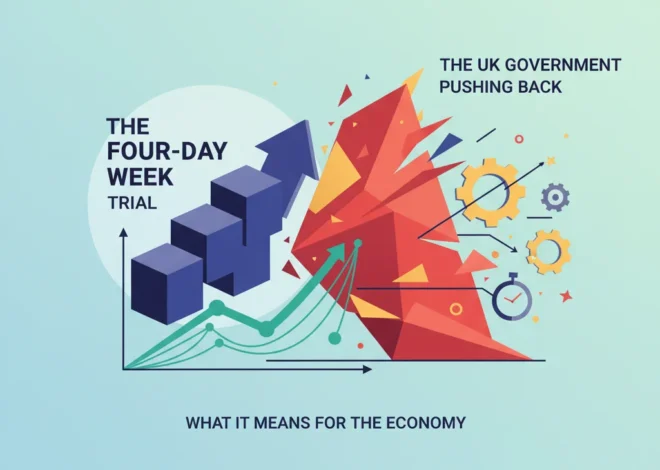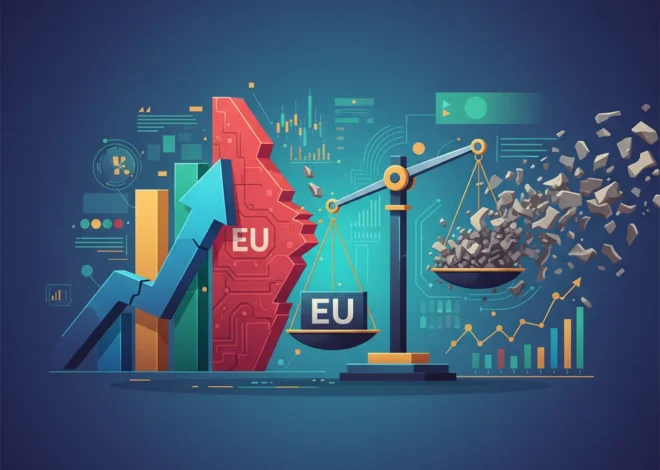
The Blue Wave’s Ripple Effect: How a Unified Democratic Government Reshapes the Investment Landscape
In the world of finance and politics, few events are watched with as much anticipation as a major shift in power in Washington. The conclusion of the Georgia runoff elections, which handed the Democratic party a razor-thin majority in the US Senate, marked just such a moment. This “blue sweep,” unifying control of the White House, the House of Representatives, and the Senate, fundamentally altered the political calculus and, with it, the entire economic and investment outlook. But beyond the initial headlines, what does this new political reality truly mean for the economy, the stock market, and your investment portfolio?
The initial reaction on Wall Street was a fascinating case study in market psychology. For months, the prevailing wisdom was that a Democratic sweep would be bearish for stocks, ushering in an era of higher corporate taxes and stringent regulations. Yet, as the results became clear, the markets rallied. This pivot reveals a crucial shift in perspective: investors quickly moved past their fears of tax hikes and began pricing in the immense potential of large-scale fiscal stimulus. The focus turned from what the government might take away to what it was about to inject into the economy. As discussed by analysts on the FT News Briefing podcast, the prospect of trillions in government spending on pandemic relief and infrastructure became the dominant narrative, fueling optimism for a powerful economic recovery.
A New Legislative Agenda: From Gridlock to Action
With unified government, the legislative logjam that defined previous years was poised to break. The Democratic agenda, long confined to policy papers and campaign promises, now had a viable, albeit narrow, path to becoming law. This agenda rests on several key pillars, each with profound implications for different sectors of the economy.
Understanding these potential policy shifts is critical for anyone involved in finance, trading, or long-term investing. The table below outlines the core components of the new administration’s likely focus and their potential market impact.
| Policy Area | Potential Actions | Anticipated Impact on the Economy & Stock Market | Key Sectors Affected |
|---|---|---|---|
| Fiscal Stimulus & Infrastructure | Multi-trillion-dollar packages for COVID-19 relief, infrastructure renewal (roads, bridges, green energy), and expanded social safety nets. | Strong boost to GDP growth in the short-to-medium term. Potential for higher inflation. Bullish for cyclical and value stocks. | Industrials, Materials, Construction, Clean Energy, Consumer Discretionary |
| Technology & Antitrust | Increased regulatory scrutiny, potential for antitrust lawsuits against Big Tech, and new legislation on data privacy and platform liability. | Creates headwinds and uncertainty for mega-cap tech stocks. May benefit smaller competitors and enhance innovation in the long run. | Big Tech (FAANG), Social Media, E-commerce, Fintech |
| Climate & Energy | Rejoining the Paris Agreement, significant investment in renewable energy technology, tax credits for electric vehicles, and stricter environmental regulations on fossil fuels. | Major tailwind for the green energy sector. Poses significant challenges for traditional oil, gas, and coal industries. | Renewable Energy (Solar, Wind), Electric Vehicles, Utilities, Oil & Gas |
| Taxation | Proposals to raise the corporate tax rate from 21% and increase taxes on high-income individuals. | Potential drag on corporate earnings and overall stock market valuations if enacted. The slim majority makes large-scale hikes challenging. | All sectors, particularly highly profitable corporations and luxury goods. |
This shift from gridlock to action represents a paradigm change for the US economy. While the previous administration focused on deregulation and tax cuts, the new agenda prioritizes government spending and investment as the primary engine of growth. This has significant implications for capital allocation and the types of companies poised to thrive in the coming years. The UK's Stealth Wealth Tax: Why a Council Tax Shake-Up on Expensive Homes is on the Horizon
Sector Spotlight: Identifying the Winners and Losers
For investors, navigating this new landscape requires a granular, sector-by-sector analysis. The broad market indices may tell one story, but the real opportunities and risks lie within specific industries.
The Green Revolution: A Clear Tailwind
Perhaps the most unambiguous beneficiaries of the Democratic sweep are companies tied to the green economy. With a clear mandate to address climate change, billions in federal funding are expected to flow into renewable energy, electric vehicle (EV) infrastructure, and energy efficiency technologies. This isn’t just about environmentalism; it’s a core tenet of the new administration’s economic strategy. Investors have taken note, with stocks in solar, wind, and EV-related companies seeing significant inflows. According to reporting from the period, this shift was one of the most immediate market reactions to the election results (source).
Big Tech’s Balancing Act
The technology sector faces a far more complex outlook. On one hand, a stronger economy fueled by stimulus is good for business, boosting ad revenue and consumer spending on gadgets and services. On the other hand, the threat of regulation is very real. For the first time in years, there is bipartisan appetite in Washington to rein in the power of Big Tech. This could manifest as antitrust lawsuits, new data privacy laws, or changes to liability protections. This uncertainty creates a challenging environment for investors in mega-cap tech, even as the underlying business models remain incredibly strong. The evolving regulatory landscape for financial technology, or fintech, will be particularly important to watch, as new rules could either stifle or accelerate innovation in digital banking and blockchain applications.
Financials and Banking: A Cautious Optimism
The banking sector is another area of nuance. A steeper yield curve, driven by expectations of economic growth and inflation, is generally positive for bank profitability. Stimulus checks and a strong job market also mean fewer loan defaults. However, this is balanced by the prospect of tougher oversight from regulators like the Consumer Financial Protection Bureau (CFPB). Financial institutions, from large investment banks to community lenders, will need to navigate a landscape that is simultaneously supportive on the macroeconomic front and potentially restrictive on the regulatory one.
The Macro-Economic Question: Growth vs. Inflation
Zooming out from individual sectors, the biggest question hanging over the entire economy is the interplay between growth and inflation. The sheer scale of proposed government spending is unprecedented in the modern era. Proponents argue it’s a necessary jolt to accelerate the recovery from the pandemic-induced recession, creating jobs and modernizing American infrastructure.
However, this massive injection of demand, coupled with ongoing supply chain disruptions, has ignited a fierce debate among economists about the risk of runaway inflation. For years, inflation has been dormant, but many now believe the combination of fiscal stimulus and accommodative monetary policy from the Federal Reserve could finally awaken it. This risk was a key point of discussion among financial analysts trying to forecast the future of the economy (source). A sustained rise in inflation would force the Fed’s hand, potentially leading to earlier-than-expected interest rate hikes, which could put the brakes on the stock market rally. The Royal £250-a-Week 'Bargain': A Financial Deep Dive into the Royal Lodge Controversy
Conclusion: A New Chapter for the US Economy
Does the Democrats’ election sweep change anything? The answer is an unequivocal yes. It replaces a political environment of gridlock and inaction with one of unified control and ambitious, government-led economic policy. For investors and business leaders, this ushers in a new chapter defined by both immense opportunity and significant risk.
The primary driver will be a wave of fiscal spending aimed at bolstering the recovery and investing in long-term priorities like infrastructure and clean energy. This creates powerful tailwinds for specific sectors and could fuel strong overall economic growth. However, this new era also brings with it the looming specter of higher taxes, stricter regulation, and the ever-present risk of inflation. The razor-thin majority in the Senate will act as a crucial moderating force, but the direction of travel is clear. Success in this new environment will require a deep understanding of the policy details, a nimble investment strategy, and a keen eye on the macroeconomic data that will shape the Federal Reserve’s response for years to come.
The EV Revolution: More Than a Guilt-Free Drive, It's a Multitrillion-Dollar Economic Shift


